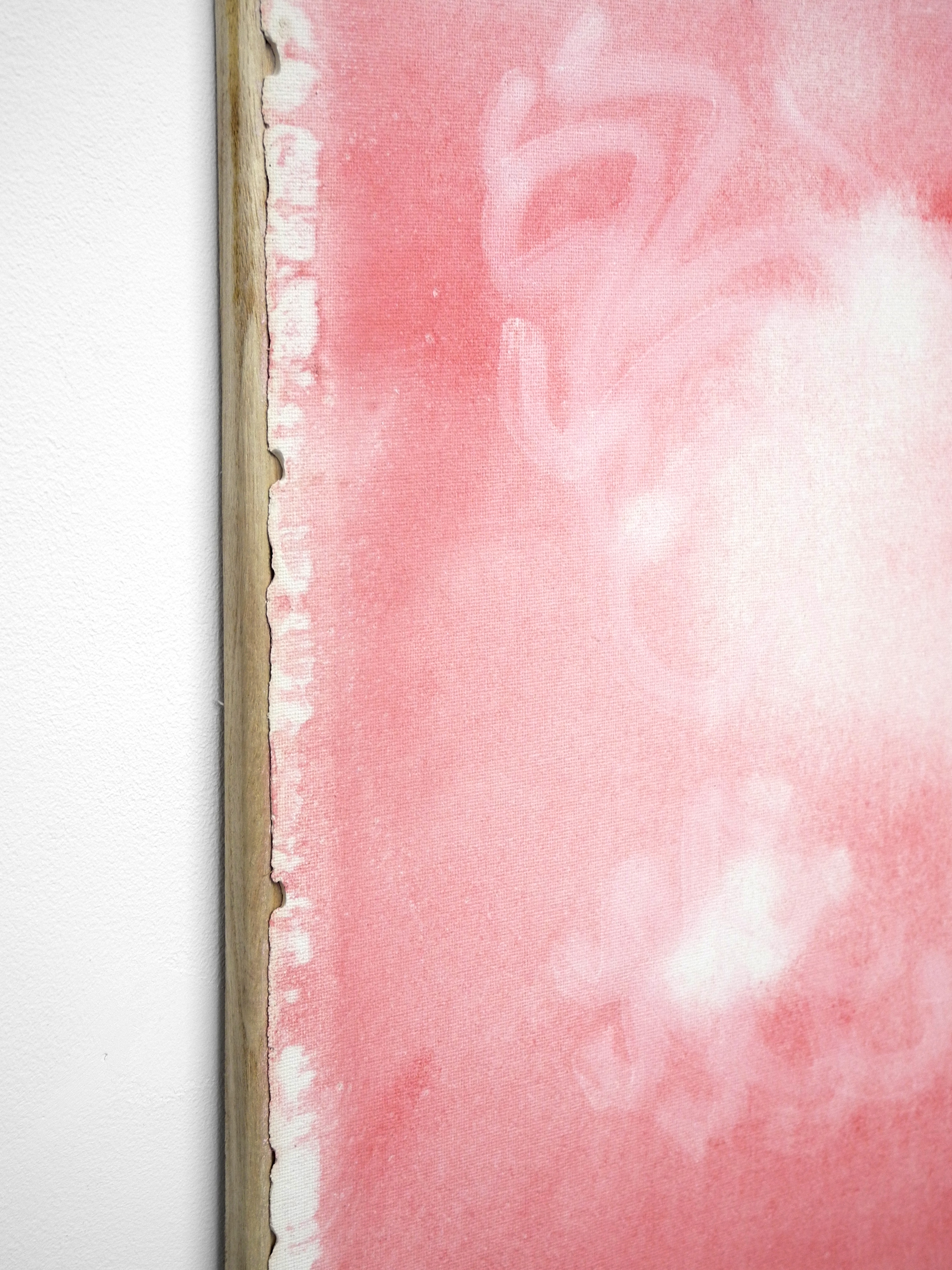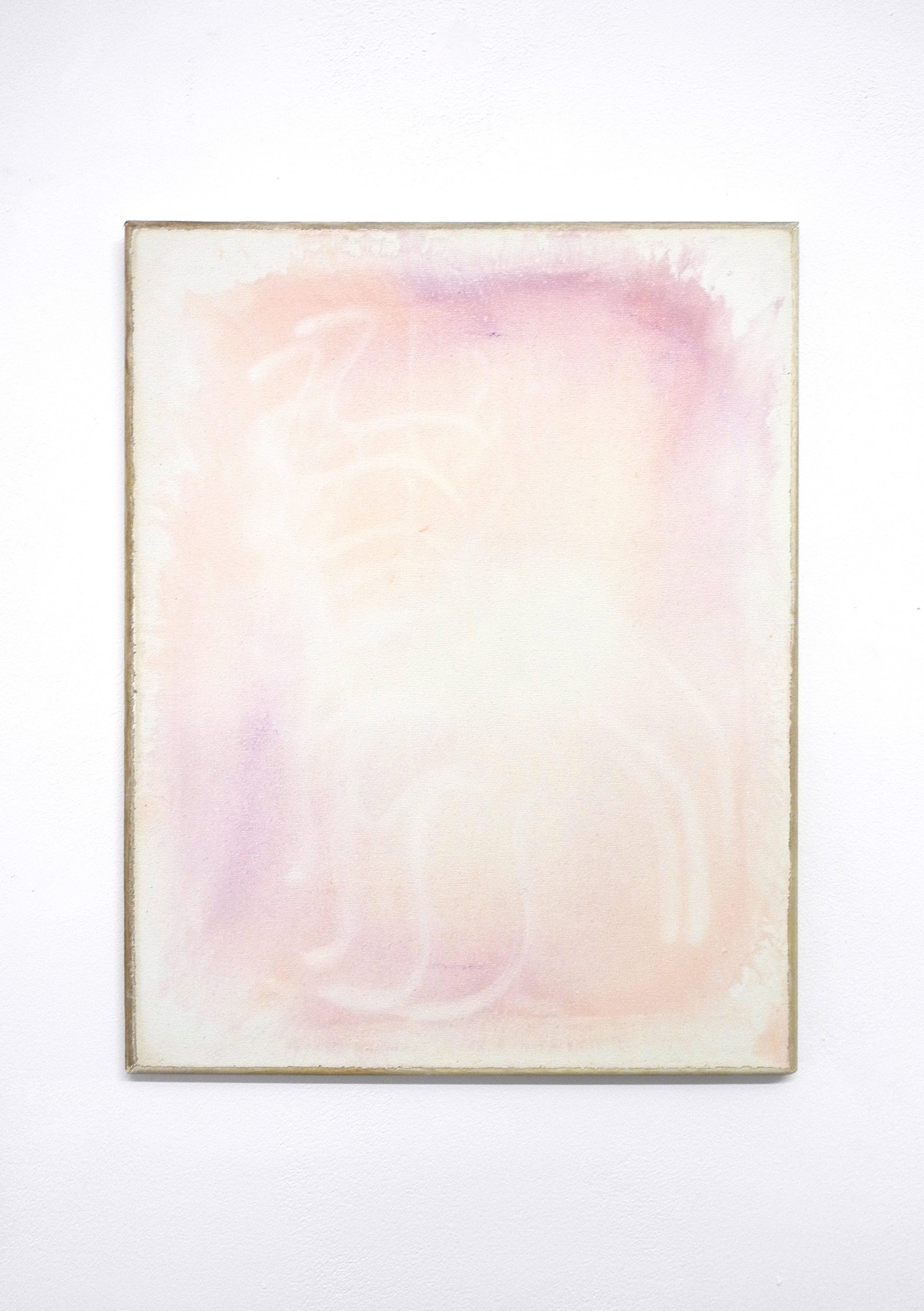Mark Riddington
Interview by David McLeavy
Published August 2014
-
Mark Riddington’s work combines forms of painting and sculpture to test the potential of materials and investigate the surface as a potential area for continuous experimentation. His hands on approach references traditional craftsmanship yet his simplistic display remains distinctly contemporary.
-
You use a mixture of fragile and solid materials in your work such as sugar paper and cement and I am interested to know if this material opposition is a key factor or is it just because they are the materials at hand?
It's a bit of a mix really as the materials I use are often the remnants of past projects. I use left-over materials as a starting point and when I see something happening that interests me I will then source more of these materials to expand the project. What interested me about the paper and cement was how subtleties within their form are determined by their effects upon one another. For example, when the paper becomes entirely submerged in the cement it warps and buckles, which is repeated in the surface qualities of the cement once it sets. This equilibrium between materials has informed much of my practice and forms the underlying basis of a lot of my making.

I think it’s interesting that you use materials from previous projects and I am interested to know how precious you are about your materials or works. Would you happily re-use a work or is it important that they stay intact?
It's interesting that you should ask that as I am currently in the process of dismantling an old work in an effort to re-appropriate it into something new. My work Glitter Painting (Gold) is going to be re-appropriated and used as a cast for a plaster column similar to the ones I exhibited at S1 Artspace recently. I try not to be too precious with my materials during the making process as this can be limiting to the outcome. Sometimes it is within the accidents or unexpected moments that the more interesting stuff emerges from the work. For example with some of my slab works the edges and corners have cracked and broken off with which comes a revealing of the works materiality.
There is something quite interesting about when artists experiment with materials in order to understand them. Do you think your best work is made when your trying things and testing materials in a new way, and do you ever worry that your work may suffer once you understand everything about a given material?
The testing process is only part of my working as it is through the testing that I find what interests me in a material – I then attempt to isolate and refine these elements into a finished work. All of the accidents that occur during the testing process are important,
however I think that it is in the refining that I can really get into the materiality by trying to bring out certain qualities and by attempting to get a material to behave in a certain way. Once this refining process is complete and I feel I have a series of resolved works I move onto something new.

It may seem like a rather menial question to some but I feel that it is important for readers to understand the balance of practice, work and theorizing. How do you balance all the facets of your practice? Do you focus heavily on making ‘things’ and then contextualise/theorize them afterwards, or is it more complicated than that?
It depends what I'm doing. With some work I have specific aims and intentions though much of my work comes from making and looking then I contextualise things afterwards.
Your work contains visual references to things such as Brutalism and the urban environment, is this something intentional? Following on from that question, what are your influences?
I take influence from a lot of different sources including Brutalism and I was initially drawn to working with concrete and silicates after becoming fascinated with Brutalist architecture in Sheffield such as the Moore Street Substation. I found these buildings incredible and wanted to emulate some of their facades and formal structures in my sculpture. I soon learned about the versatility of these materials through
experimentation and moved away from the Brutalist subjects, but of course there are some remnants of the earlier thinking that permeate the work due to this progression.
Do you consider how an audience may approach your work? I say this, as one thing that strikes me about your work is the materiality and the fact that the material properties can be hidden or warped somewhat by the fact people view the works as oppose to holding them. Is this something you like to play with at all?
Yes, this is something that I am really interested in - provoke an intrigue towards an object's materiality in a viewer. I've found that how I place a work in a space is crucial to how a viewer's expectations of its materiality are perceived. For example I made a sculpture that was a 5 foot black latex balloon inflated and stuffed into a window frame resting just above people's heads. The colour of the balloon, it's surface and the fact that it was so still and imposing as people walked under it gave it a real sense of weight, however this was instantly diminished the moment people reached up and touched it. Provoking the viewer to want to have a tactile interaction with a work, and placing something just out of reach leaving an enigmatic quality within an object.
Following on from what you mentioned, some of your work is quite imposing physically and demands attention, however some of your smaller balloon works are subtle and could be missed by a fleeting viewer. Is that something you try and play with?
Yes, though I guess it is less a case of trying to balance things and more a case of causing imbalance. There is something really interesting about how proximity can intensify or diminish a works presence in space, like offsetting a larger more imposing work against something small and unobtrusive. Like you say, this can lead to the more subtle details being missed by the lesser observant. Some of my sculptures are less than one inch in diameter and often installed in fairly discreet spaces in a gallery, such as behind piping or tucked away in a corner somewhere. So to then put a large black sphere in the space creates an interesting dynamic and challenges a viewers vigilance.
Looking at some of your more recent works, specifically the poured plaster and concrete framed works, is there something about working to a domestic scale that interests you or is it more of a reaction to space restrictions and what frames are at hand?
The scale of the works is definitely led by the space restrictions to some degree, though I find this interesting in itself. As the works are made by pouring plaster the canvas must sit flat for the plaster to spread evenly. To do this requires floor or desk space, which is limited in my studio. It seems this is a similar reason to why my work often ends up as columns, it's a case of maximising on floor space, similar to how an architect may build upwards rather than outwards. It's an efficiency thing. I also find that by keeping some of these works smaller, a viewer is encouraged to step closer to engage with the work, which will garner a stronger understanding of its subtleties and surface qualities.

I am interested to know how you approach the act of documenting your work. Do you find it difficult to translate the physicality of the works through photography or do you feel that it’s just an inevitability?
I don't worry about it too much. A photograph of my work isn't a substitute for the work itself, it is just so people can get a rough idea. I know that it will never be completely accurate so yes, an inevitability.

As the nature of your work suggests its making processes in some way, I am interested to know if you feel it is very important to view your work in a gallery setting, where all other distraction (to a certain degree) are eliminated? Or do you feel your work can be versatile enough to sit within disruptive environments?
Viewing the work in a gallery can be important though it isn't always, it depends what I'm doing. I find that a lot of the time it's like a final clarification, like I need to remove everything else to really see what it is I have made, particularly with the amount of detritus and stuff that accumulates in my studio as a result of the making - empty bags of plaster, dust sheets, torn paper, cardboard, takeaway boxes - stuff like that. Removing stuff from the studio can really surprise you too. You can expect a work to behave in one way and it can do something completely different. This is exciting. I mean, it can be frustrating at times but that's fine too. I made a work once that was just a photograph of all the accumulated stuff in my studio on my desk. It fascinated me because it was the total opposite of what I was trying to achieve with my work at the time, which was these quite subtle, subdued plaster works. The work can sometimes be the 'disruptive environment' itself and other times it's important to get the hell away from it.

So what’s next for you?
I’m exhibiting some new work at a new space in Liverpool called MODEL as part of the Biennial and also as part of the S1 Artspace member's show 'Three Act Structure'. Then I'm making some new work for an exhibition curated by Lindsey Mendick opening in September titled 'Over Seasoned'. There are some really great artists involved with that and it looks set to be an excellent exhibition so I'm looking forward to it. Other than that I've got a few ideas I want to try for new work so lots of time in the studio to keep me busy!
-
Mark Riddington lives and works in Sheffield. Recent exhibitions include Axolotl, MODEL, Liverpool, Three Act Structure, S1 Artspace, Sheffield and Bridges Help People Cross Rivers, Picadilly Place, Manchester.
If you like this why not read our interview with Holly Hendry
-
© 2013 - 2018 YAC | Young Artists in Conversation ALL RIGHTS RESERVED
